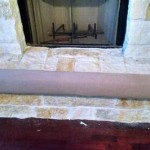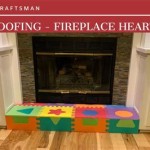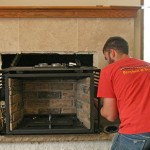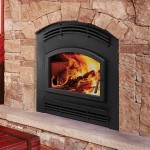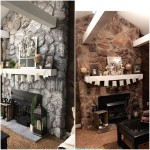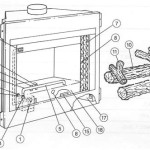Understanding Natural Gas Fireplace Insert Heat: A Comprehensive Guide
Natural gas fireplace inserts offer an efficient and convenient alternative to traditional wood-burning fireplaces. They provide a controlled and consistent source of heat, while also enhancing the aesthetic appeal of a living space. Understanding the heat output, efficiency, and factors influencing the heating capacity of these inserts is crucial for making an informed decision when considering purchasing one for your home.
Unlike open-hearth fireplaces, which often lose more heat than they generate due to significant drafts and inefficient combustion, natural gas fireplace inserts are designed for optimal heat transfer. They typically consist of a sealed firebox that is inserted into an existing fireplace opening. This design minimizes heat loss through the chimney and maximizes radiation, convection, and sometimes even forced-air circulation to distribute heat effectively.
Key Point 1: Measuring Heat Output: BTUs and Heating Capacity
The primary measure of a natural gas fireplace insert's heat output is British Thermal Units (BTUs). One BTU is the amount of energy required to raise the temperature of one pound of water by one degree Fahrenheit. A higher BTU rating generally indicates a larger heating capacity, but it’s crucial to understand that BTU rating alone doesn’t determine the overall efficiency or suitability for a particular space.
Manufacturers typically specify the BTU input and output of their inserts. The input BTU represents the amount of energy the appliance consumes, while the output BTU reflects the amount of usable heat it produces. The difference between these two figures represents the energy lost during combustion. Efficiency is often expressed as a percentage, calculated by dividing the output BTU by the input BTU and multiplying by 100.
The heating capacity of a natural gas fireplace insert is often described in terms of square footage. However, this is an estimated value and can vary significantly depending on several factors, including the climate, insulation levels of the home, window size and efficiency, and the overall layout of the space. A properly sized insert for a small, well-insulated room may overheat if placed in a larger, drafty space.
Key Point 2: Factors Influencing Natural Gas Fireplace Insert Heat
Several factors influence the actual heat delivered by a natural gas fireplace insert, influencing the perceived warmth within a room. These factors directly affect the efficiency and effectiveness of the insert in heating a living space.
First, the design of the firebox and the heat exchanger plays a crucial role. Some inserts feature cast iron or steel fireboxes designed to radiate heat efficiently. Others incorporate heat exchangers, which are metal components that increase the surface area for heat transfer. These exchangers extract more heat from the combustion gases before they exit through the vent, improving overall efficiency. The materials used in construction and the engineering of the insert directly impact its ability to distribute heat effectively.
Second, ventilation is a vital consideration. Direct-vent inserts draw combustion air from outside the home and vent exhaust gases directly outdoors, preventing the depletion of indoor air and minimizing the risk of carbon monoxide poisoning. This sealed system also allows for a more controlled and efficient combustion process. The quality of the venting system, along with proper installation, ensures optimal performance and safety.
Third, the type of burner affects heat distribution. Different burner designs, such as ribbon burners or log burners, produce varying flame patterns and heat distribution. Ribbon burners tend to provide a more uniform and consistent heat output across the firebox, while log burners often create a more visually appealing flame but may have less uniform heat distribution. The choice of burner style should align with both aesthetic preferences and heating goals.
Finally, the presence of a blower can significantly enhance heat circulation. Blowers force air across the hot firebox and into the room, distributing heat more quickly and evenly. This is particularly beneficial for larger spaces or areas where natural convection currents are insufficient to distribute heat effectively. The blower speed is often adjustable, allowing users to control the amount of heat circulated.
Key Point 3: Efficiency Ratings and Cost Savings
The efficiency rating of a natural gas fireplace insert is a critical factor to consider when evaluating its long-term cost-effectiveness. Higher efficiency ratings translate to lower fuel consumption and reduced heating costs. Efficiency ratings typically range from 60% to 85% or higher for modern, high-efficiency models.
Energy Star-certified models meet specific energy efficiency criteria established by the Environmental Protection Agency (EPA). These models undergo rigorous testing to ensure they meet stringent performance standards. Choosing an Energy Star-certified insert can lead to significant savings on energy bills over the lifespan of the appliance.
The upfront cost of a natural gas fireplace insert can be substantial, but the potential for long-term cost savings should be factored into the decision-making process. Consider the projected annual heating expenses, the cost of natural gas in your area, and the efficiency rating of the insert. A higher initial investment in a more efficient model may pay for itself over time through reduced energy consumption.
Furthermore, rebates and tax credits may be available for installing energy-efficient natural gas fireplace inserts. These incentives can help offset the initial cost and make the investment even more attractive. Check with your local utility company, state energy office, and federal government agencies for information on available incentives.
Regular maintenance, including cleaning the burner and venting system, is crucial for maintaining optimal efficiency. A properly maintained insert will continue to operate at peak performance, delivering consistent heat and minimizing energy waste. Annual professional servicing is recommended to ensure the safe and efficient operation of the appliance.

Chaska 34 Gas Fireplace Insert Kozy Heat

Kozy Heat Fireplaces And Inserts Portland Or Nw Natural Appliance Center
How To Install Gas Fireplace Insert Heat Glo

Heat Glo Grand 135 Portland Or Nw Natural Appliance Center

Majestic Trilliant 25 Inch Direct Vent Natural Gas Fireplace Insert

Pros And Cons Of Direct Vent Gas Fireplaces Tarantin Industries
Heat Glo Supreme Gas Fireplace Insert Fireplaces Com

Gas Fireplace Insert Cost Forbes Home

Gas Fireplaces Inserts And Stoves N Fixin S

Chaska 25 Gas Fireplace Insert With Remote Small Log
Related Posts


